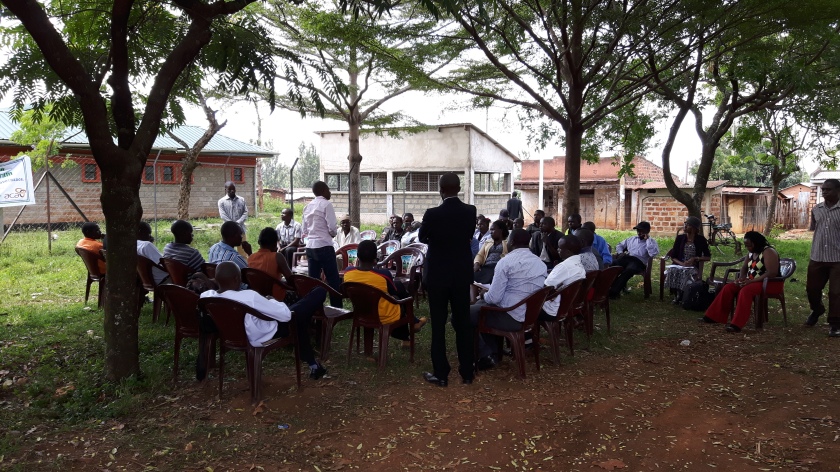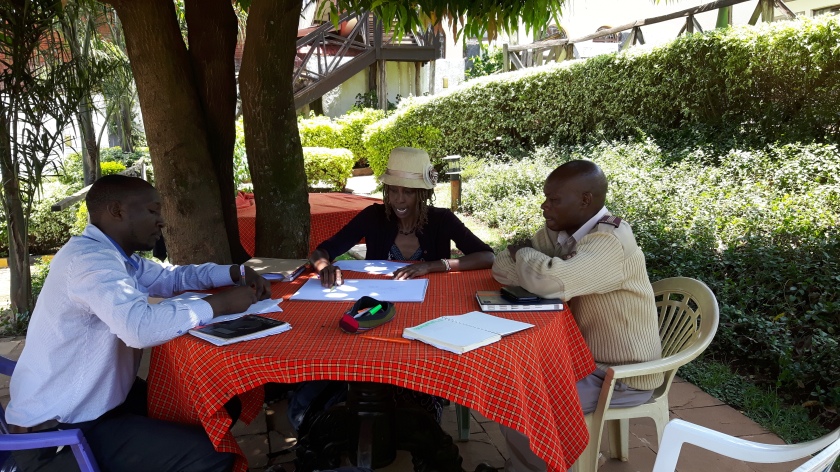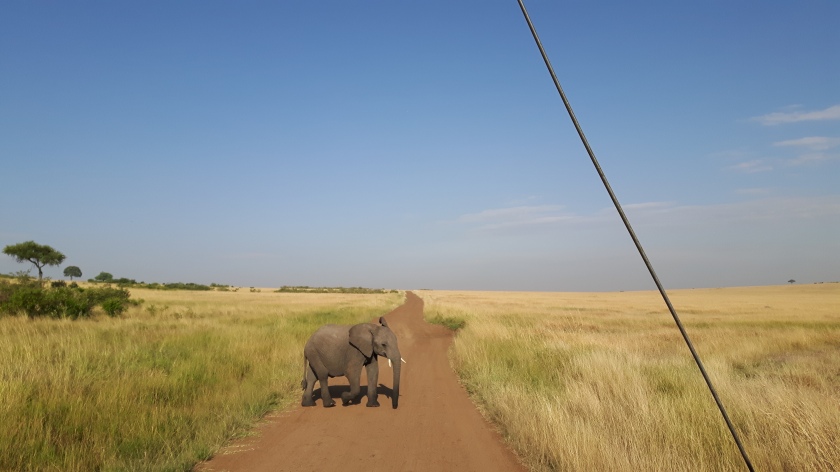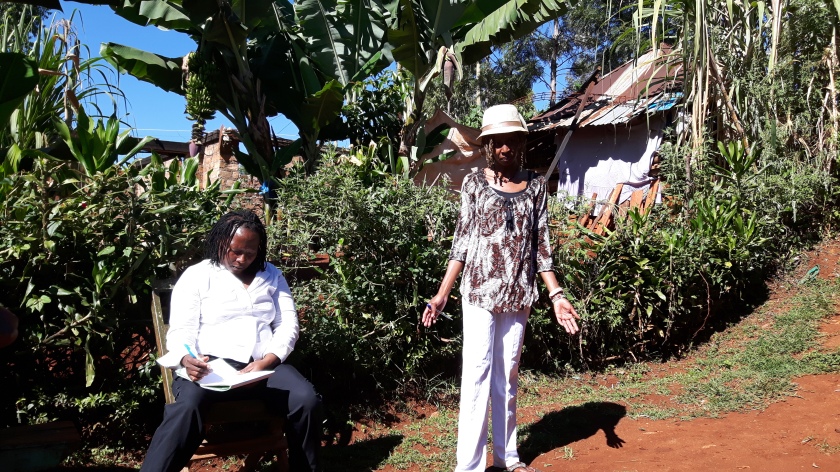Two years since her killing we keep demanding #Justiceforberta #Bertavive!
I will never forget the day that I first met Tomy. I just started with my internship for the Shelter City Project – The Hague in September 2016. One of my first tasks was to welcome Tomy, a journalist and human rights defender from Honduras, at Schiphol Airport. She walked through the exit doors with a big pink and yellow striped sombrero on her head and a puzzled face. Her cheeks flashed a greyish color… Continue Reading
 Coconut water in a package and lots of bags ready to be unpacked. This can only mean one thing: I am home again. Wauw!, what else can I say?! Living six months as a nomad, there is definitely much more to say. Many cliché are appropriate, like ‘life is a gift’, ‘spent your time wisely’, ‘the world is my home’, and so on, but a blog would not be a blog without my own take on events.
Coconut water in a package and lots of bags ready to be unpacked. This can only mean one thing: I am home again. Wauw!, what else can I say?! Living six months as a nomad, there is definitely much more to say. Many cliché are appropriate, like ‘life is a gift’, ‘spent your time wisely’, ‘the world is my home’, and so on, but a blog would not be a blog without my own take on events.
After my exams in January I decided to take a leap of faith. Without much planning, nor a bag of money, nor fear, I gave up my appartment for half a year and moved my stuff to the garage of my father. A crash course on both Female Genital Mutilation and Participatory Action Research later I found myself on a plane to Kenya (blog below). The start of an amazing journey. The past six months I have been on the road, travelling near and far: Kenya, Egypt, The Netherlands, Germany, Poland, Belgium, and Jamaica.
As we all know the world and its people have many dimensions, and I think I have seen quite some of it in a short period of time. From extreme poverty to excess. From mountains high to African savannah. From sexual purity to dancehall banging. From Machismo to Feminism. Every possible ‘color’ of water. A universal smile. Hospital beds and needles. One God and his/her many faces. The power of music and dancing. One love….
Sometimes I wonder why I am so lucky. Lucky to experience all of this, and to learn from it. Yes, I know I was born as a white European citizen. A priviliged status that I question a lot. Then again, I realize that my journey is also drastically shaped and made possible by tons of discipline, working my ass off, and making -understanding what is going on around me in a world that sometimes seems so hopeless- priority number one.
From my experience I can tell you this: there is still plenty of beauty and kindness out there. While sad events such as the Brussels, Baghdad and Istanbul attacks reached my ears, I pitty the media that seldom shares the intruiging accomplishments and wisdom of many individuals and communities around the world that work hard for peace and love. Above all, I am amazed by the hospitality I encountered along the way, this goes beyond words.
Old time friends and new faces, each and every one of them has influenced and inspired me, some even more than they will ever know. This is also the moment to give my deepest thanks and appreciation to the people that have hosted me and shared with me during this time:
Phyllis, Stevoe, Kelly, Madelon, Roxy, Vera, Merab, Lydia, Violet, Franz-Peter, Sieglinde, Nore, Hawa, Assia, Wilfried, Monica, Joris, Isabelle, Achmed, Anne & Willem, Luca, Muriel, Kerstin & Jelle, Team HutjeXL Ellen & Mies, Julia Puply’s, Mariella, Devo, Dustin, Natasha & Orlando, and Fabian.
If giving advice is also a way of sharing, I would like to end this blog with the following message: whatever situation you encounter: try not to judge. Understanding and compassion make a more genuine world and one happy camper 🙂
Today I had a meeting with Madelon, founder of Research Academy 7Senses, and Phyllis Livaha, supervisor of our research on FGM in Kisii, Kenya. It was a great meeting, full of positive energy and new (action research) ideas for the future. Phyllis wrote a blog on our main research findings and last days in Kisii: check it out!
Some pictures of our last week in Kisii; winding up meetings, making last minute new friends, and the bittersweet goodbye:








Before we dive into the last week of research we detached ourselves from it for a couple of days and let the soft sweet smelling breeze of the Masai Mara clear our minds. I have never been on a safari before and did not expect to experience this any time soon. But life can be generous sometimes, and this is one of those surprises I can only be truly grateful for. Phyllo and Stevo, I thank you to the moon (or should I say Chicago?) and back.
The Maasai Mara National Reserve (also known as Masai Mara and by the locals as The Mara) is a large game reserve in Narok County, Kenya, contiguous with the Serengeti National Park in Mara Region, Tanzania. It is named in honor of the Maasai people (the ancestral inhabitants of the area) and their description of the area when looked at from afar: “Mara,” which is Maa (Maasai language) for “spotted,” an apt description for the circles of trees, scrub, savanna, and cloud shadows that mark the area. (source: Wikipedia)

We saw many animals*, some I even had never heard of. At night we slept at a lodge in the midst of those animals. No nightwalking allowed 😉 We also visited a Maasai village, but that is worth another blog. All by all, an unforgettable experience. No picture can capture what I have seen, though they still give an impression, enjoy!
(*Black Mountain Elephant, Masai Giraffe, Baboon, Gazelle, Heyna, Topi, Warthog, Buffalo, Hippo, Meercat, Lizard, Jackal, Cape Mountain Zebra, Bushbaby, Waterbuck, Hartebeest (Kongoni), Guinea Fowl, Ostrich, Crowncrane, Secretary Bird, Lion, Lioness and cubs, Vulpture, … Unfortunately no leopard, cheetah or rhino)














Today, we organized a Focus Group Meeting at the Library of the Kisii Eye Hospital. The invitees were several people we interviewed in the past few weeks. The idea of this focus group was to bring several stakeholders (e.g. chiefs, teachers, students, health care officials, activists, etc.) from within the community together and debate on FGM; the laws, its pros and cons, and plans for action on the way forward. The turnout was great, and the venue ended up being a bit too small to accommodate everybody. All in all, a very inspiring day with great input from all members!






Let me take the opportunity today to bring to the spotlight some impressive women I have met during this Female Rights Challenge Research.

Lydia Mukami (Human Rights Defender, Challenge participant) and Phyllis (Lecturer Erasmus University College, supervisor of this research)
I had never met them before this research, but today, five weeks after I joined the team, we have become very close and it sometimes feels like we already know eachother from way back. I admire these two Kenyan ladies deeply for their passion, strenght and knowledge in and beyond the field. Follow Phyll her experiences in Kenya via her blog.

Recently we met three inspiring Kenyan ladies from the Nairobi based foundation Vinbel. This organization ‘works for and with women and girls through empowering them with information on the Importance of educating the girl child, Issues affecting the girl child like Female Genital Mutilation, Feminine Hygiene, Rape among others.’ Bianca, Bella (founder) and Pinky spoke to us about their work with enthousiasm. They are initiating activities that have the ability to truly change a young woman’s life. Check out their website!

And last but not least, a big thank you to all the women we have encountered so far while in the field in Kisii. They were willing to share their experiences, opinions and ideas on the way forward regarding FGM (Female Genital Mutilation) in Kenya!

In anthropological fieldwork we have this phase that famously goes under the name of ‘hanging around’. It means that the first (approximately) two weeks you become familiar with the community you are doing research on and they with you. You literally hang around, talk with people you encounter and engage in informal conversations. Open interviews and semi-structured interviews only follow later after building up rapport. However, this research is not anthropological and has a different pace. The aim of Participatory Action Research is to involve the whole community, which means you need to contact and interview a lot of people. The consequence is that you do not have the time to spend hours with every participant on a regular basis (as we usually do in anthropological research). However, the goal of (traditional) anthropological research is different than that of PAR; in PAR we work towards a specific action plan that facilitates local solutions and that allows the community to generate their own process of tackling issues, while in anthropological research we mainly aim to gain rich data and a deep understanding of a certain issue, community, practice, etc. which can facilitate mutual understanding and respect between different actors and can reveal the underlying (hidden) dynamics that are at work. I am not a big fan of definitions, so what I wrote above is solely an attempt to point out differences. One of my personal goals during this research is to find out how to combine anthropological research with PAR, because I think they are both of great value and therefore can form a winning team. I am not the first one to reflect on this matter. Within my own Master programme I have read about scholars who urge for a public anthropology, and conducting PAR is seen by some as one of the ways forward. I have also found some promising literature that can hopefully give me new insights. Although we are always on the road, going from one place to another and meeting many different people, people do start recognizing us in town, crossing the street to come and say hello. It is always a good sign when that happens, it means you are somehow becoming part of the daily life. This week we had an interview with the former deputy mayor. When he mentioned his three names he explained that the second and third name identify him as a man from the Kisii tribe. He decided that I should have my own Kisii name and introduce myself as Sinde Nyamboke Moraa to other people. Nyamboke means sweet or honey, and Moraa is a big tree with beautiful flowers which offers shade in times of drought. I followed his advice and introduced myself a couple of times like that. People find it funny and sometimes ask me if I am married to a Kisii man. A nice ice breaker I would say.





Back in the Field
The next days I went back in the field and attended my Swahili classes with renewed energy, though not feeling 100% yet. I felt lightheaded and my stomach started to protest. I tried to ignore it, since there is so much going on that I don’t want to miss out on. We are encountering so many interesting people in Kisii and the rural outskirts, every visit is an unforgettable experience. One day we interviewed for example J, the chef of a local eating place just a little outside of Kisii center. Entering this place, I became, for a second, overwhelmed by the heavy odor of the food, the heat and the flies buzzing around. Madame J. is deaf, but luckily the owner of the place knows sign language. During the interview she translated our questions and J’s answers into sign language. Although she could not hear nor speak, the interview went very well and J. was happy to cooperate.

Another remarkable afternoon was the visit with Lydia to a family that lives in the rural area of Kisii land. Since we have so many interviews going on, our team sometimes has to split up. Lydia had met the grandmother of the family before at a local market. On arrival her two sons were waiting for us at the foot of the hill where they live. We parked the car and continued the journey on foot. The compound of the family is surrounded by green pastures of tea plantations, exotic crops such as banana trees and sugarcane, and colorful vegetation. Everything grows wildely, it looks like a little paradise. People of Kisii are very proud of their region. They are blessed with fertile soil, and even when one has only a small plot, they are able to be self-sufficient when it comes to food. In a way it is fascinating when you know that although the two sons I just mentioned are currently unemployed their family is not suffering from hunger. Once we arrived at the compound they gave us first a little tour through the compound. Via little dirt roads we passed first the house of one of the sons. The houses of this compound are made out of mud and people and animals live very close to each other. After several ‘Karibu’s’ (welcome) and ‘Asante’s (thank you’s) the interview session started at the house of the grandmother. After the third interview, I had to go to the toilet. Most of the time I try to keep it up until we are back at the apartment because some toilets are, well, … you know what I mean. This time however, I had to pee so badly, I just could not concentrate anymore on the interview. So I asked grandmother if I could use the bathroom. She guided me outside and we walked for a couple of minutes towards another mud house of the compound. She designated a little mud cabin with a wooden door. The toilet was nothing more than a hole in the ground surrounded by leftover feces and little flies. Okay Sinde, you can do this, I was telling myself. I have been in similar situations before, however, it remains uncomfortable, especially when you are wearing pants that are not stretching enough to bend through your knees. So the pants had to go out without making them touch the floor. After the job was done, the pants had to go on again. While doing this, I was stepping away from that hell gate towards the back wall. When turning around I saw that the wall was covered with many flies and mosquitos. Disturbing them with a waving pant leg did not seem like a good idea. F*ck, I cannot step forwards nor backwards, I thought. Still, I managed. Thanks to previous yoga sessions on the matatu? 😉 When the interview sessions were finished I had a chat with the boys of the compound. They were very curious about female and male circumcision in my country. When I told them it is not common, they were especially intrigued by the idea that most men are not circumcised in Belgium/The Netherlands. They are convinced that not being circumcised influences a man in bad ways; it is not hygienic and reduces the sexual prestige of a man. In Kenya male circumcision is very normal and even encouraged by the government. Kenyan tribes that do not practice the circumcision of men are somehow looked down upon by other tribes. Interesting material, worthy of its own research.

